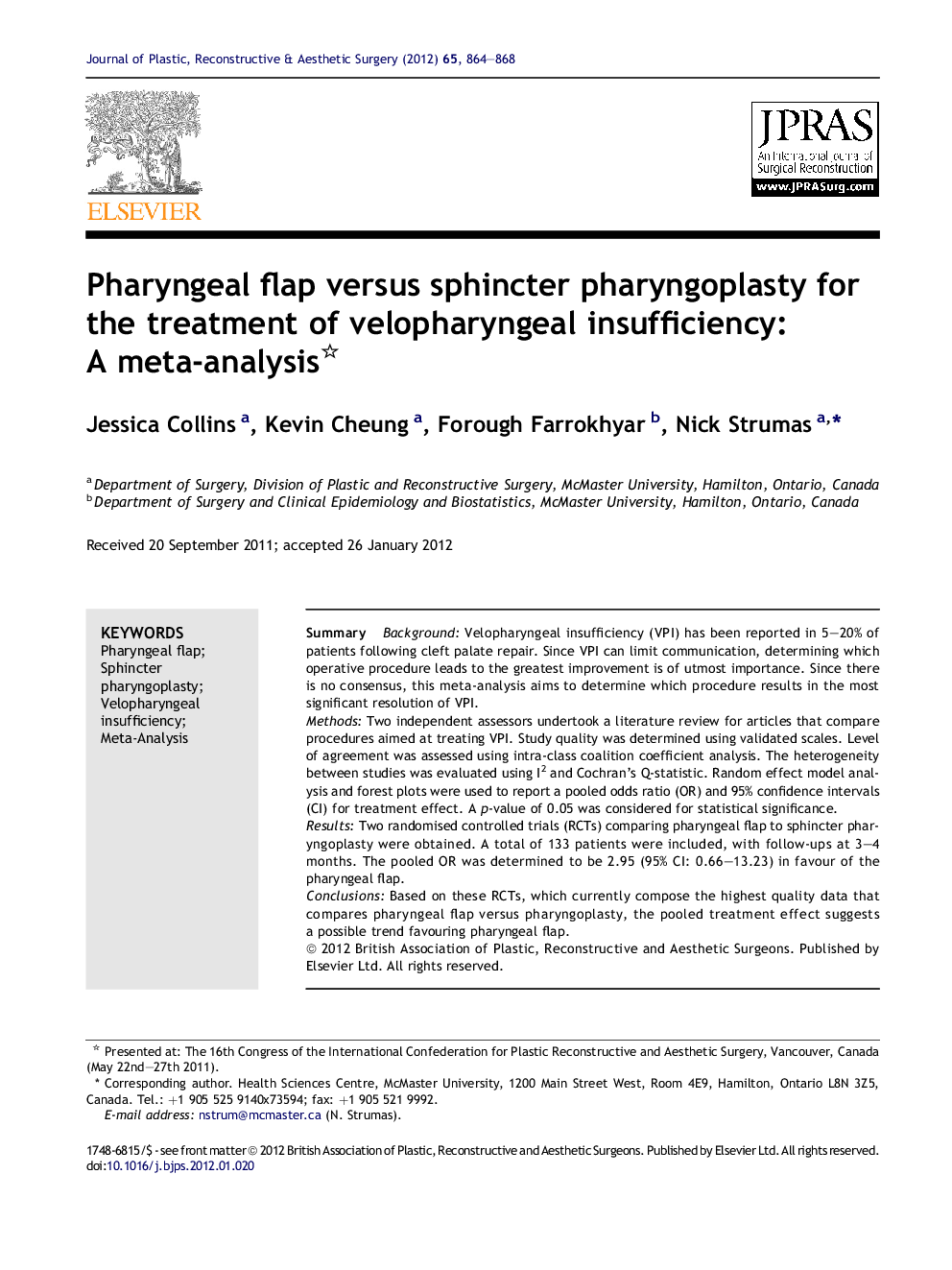| Article ID | Journal | Published Year | Pages | File Type |
|---|---|---|---|---|
| 4118240 | Journal of Plastic, Reconstructive & Aesthetic Surgery | 2012 | 5 Pages |
SummaryBackgroundVelopharyngeal insufficiency (VPI) has been reported in 5–20% of patients following cleft palate repair. Since VPI can limit communication, determining which operative procedure leads to the greatest improvement is of utmost importance. Since there is no consensus, this meta-analysis aims to determine which procedure results in the most significant resolution of VPI.MethodsTwo independent assessors undertook a literature review for articles that compare procedures aimed at treating VPI. Study quality was determined using validated scales. Level of agreement was assessed using intra-class coalition coefficient analysis. The heterogeneity between studies was evaluated using I2 and Cochran’s Q-statistic. Random effect model analysis and forest plots were used to report a pooled odds ratio (OR) and 95% confidence intervals (CI) for treatment effect. A p-value of 0.05 was considered for statistical significance.ResultsTwo randomised controlled trials (RCTs) comparing pharyngeal flap to sphincter pharyngoplasty were obtained. A total of 133 patients were included, with follow-ups at 3–4 months. The pooled OR was determined to be 2.95 (95% CI: 0.66–13.23) in favour of the pharyngeal flap.ConclusionsBased on these RCTs, which currently compose the highest quality data that compares pharyngeal flap versus pharyngoplasty, the pooled treatment effect suggests a possible trend favouring pharyngeal flap.
